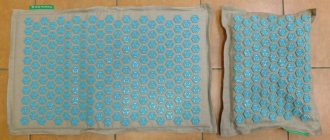Today sport is an integral part of the lives of many. And not only those who go to the gym. On social networks, every now and then you come across an advertisement for a fitness club near your home or a photo of a fit friend in a new uniform. For some, sport is, first and foremost, a hobby. For others, it is a profession or a means to achieve a certain goal.
Both amateurs and professionals have one thing in common - the desire to work on themselves. The path to the best version of yourself is not easy and requires not only physical endurance, but also willpower. However, you need to know when to stop everything. To avoid injuries, it is necessary to adequately assess your own capabilities: know the optimal weight, mileage and time. It's not easy to keep all this in your head. For convenience, you should think about a training diary.
Functional training. A toned body in 15 minutes a day
Athlete's diary: why?
According to trainer Mikhailova T.V. and teacher Guba V.P.:
“The athlete’s diary is intended for athletes and coaches for the purpose of maintaining individual control over the dynamics of a wide range of indicators of the physical activity of the student during the annual training cycle.”
In simple words - not to have a general idea of how the training went: excellent, good or bad, but to have accurate numerical indicators at hand. And based on this data, think through tactics and draw up a strategy.
A professional trainer is aware that different circumstances and factors influence our energy, endurance, and speed. Subtle observations allow you to draw objective conclusions and develop your own valuable techniques. The diary is not a bureaucratization of sports and a pointless waste of time, but a visual, effective aid necessary for serious work.
Setting up workout templates
As you can see, there are many options if you want to use Google Sheets to record your progress during your workout. Choosing a template really depends on what your workout regimen looks like and how exactly you want to record your progress.
The key is to pick one and then stick with it as you continue to make progress and improve your overall health and fitness.
Read: 1,285
Share link:
- Click to share on Twitter (Opens in new window)
- Click here to share content on Facebook. (Opens in a new window)
- Click to share on Reddit (Opens in new window)
- Click to share on Pinterest (Opens in new window)
- Click to share posts on Pocket (Opens in new window)
- Click to share on Telegram (Opens in new window)
- Click to share on WhatsApp (Opens in new window)
- Click to share on Skype (Opens in new window)
Who should keep a diary?
A diary should first of all be kept by someone who needs sport as the meaning of life and who is completely passionate about it - an athlete. A diary not only helps you understand yourself, but also characterizes you as a professional. Reveals our strengths and weaknesses. And it shows that success came deservedly, and not fortunately.
Keeping a diary is often beyond the capabilities of little athletes 4-6 years old, so you can do it for him, teaching him from early childhood that this is normal. At 8-11 years old, a child can be helped with discussion and advice. But in adolescence, a child must gain independence. Now the young athlete himself knows how, how many exercises he has done. And your interference can be annoying.
The athlete's diary can be kept by the head coach or his assistant. If you play a team sport, remember that each player must develop individually. The coach will be able to characterize you not just as an athlete, but also as a player on the team. After all, feedback is a very valuable achievement. The developed methodological base will help improve your efficiency when moving to another coach or team.
Football coach Viktor Zakharov recalls the beginning of his coaching career: “On the advice of Konstantin Ivanovich Beskov (the legendary Soviet football coach), I kept diaries and journals where I described who played, what positions, substitutions and mistakes.”
Motivation for results
Having at hand the data of other trainees, the best graduates of a sports school, or the performance of great athletes, you can compete and win in absentia. Aimed at winning in the adult league, the young athlete does not go astray with immediate success.
If there are no victories yet, the athlete can at the same time see his strong results in strength or speed loads. Prove to himself that he has all the data for success. Develop your skill more and more. Looking back at your past results and wondering how quickly you improved.
We see progress that is inspiring. The Diary of an Athlete proves to us that we compete, first of all, with ourselves. And this means we must conquer ourselves again and again.
to purchase the necessary equipment.
With a lot of weight, you will end up with distortions and imperfections or under swing (cheating), which is unacceptable for a beginner. And an incorrect movement stereotype will be developed. And relearning later is much more difficult than learning correctly right away.
It is quite difficult to explain all the movements in each exercise in words. Therefore, I created a video: “Exercise Art,” in which I fully explain how to perform various exercises technically correctly.
Moreover, despite its apparent simplicity, each exercise has its own nuances. And knowing them, you will get much greater returns from your training.
Help with performance decline
First of all, the diary will help to identify the unobvious reason for poor results, and maybe a number of other factors. It is very valuable that you can compare the last season and the present one. What positions did you start from and what plan did you adhere to, and therefore, make appropriate adjustments for the future.
With the help of a diary, it is possible to track when the first signs of decline appeared and figure out what they could be connected with. The reason may be insufficient workload or intensity.
The child can compare his performance with other trainees. If an athlete trained at the level of others, then we can come to the conclusion that the fault lies in the psychological component. It is quite obvious that an athlete cannot unfairly transfer his failures onto the team, coach or parents, and the diary is only proof of this.
Remembering vaccinations
Traveling to exotic countries is, first of all, an unforgettable experience of immersing yourself in a completely different world. But unforgettable impressions can also be made for a not very pleasant reason - contracting specific diseases. Therefore, when setting out on a long journey, travelers are vaccinated against strange viruses.
And one more life example. Most of us get vaccinated against terrible diseases at varying intervals. In childhood, we are given a decent set of vaccines, and throughout our lives they are repeated dozens of years later.
If you are not one of the ardent opponents of immunization, then a vaccination card will be useful to you. You can enter the injections of all family members and enter the dates of re-vaccination.
How to keep a diary
First of all, any diary of a schoolchild, musician or chess player begins with information about yourself: name, surname, year, sport, club or school; in case of loss, this will help to find you. It is a good idea to write down your shoe size and clothing size. Write down standard information about your trainer. Don't forget to include your contact phone number.
But the most important information is, of course, the dynamics of physical development and results. In a certain amount of time, you must master the skills that make up the technique. All of an athlete’s technique is developed in elementary school. And already on its basis, he calmly develops speed, endurance, and strength.
Are you giving 100 percent? The training load may include: normal rate, daily energy expenditure, intensity, volume of aerobic exercise, number of repetitions, sets. Together with your coach, discuss and decide which indicators affect your sport. Remember, the more a coach knows about his ward, the greater the chance of the right strategy.
Making a report
Abbreviations:
- GPP - general indicator of training
- VN - total load time, number of minutes spent on training
- VOC - time for warm-up and recovery, in minutes
- NT - the number of unfinished workouts due to poor health, in days
- PT - the number of workouts missed entirely due to health reasons, in days
- KND - number of load days, number
- KEN - number of load units, quantity
- Xort - number of competitions, number
- Kstart - number of starts, number
The diary reporting period is divided into weekly, seasonal and annual reporting. Try to be accurate when entering weekly data to avoid distorting the picture of what is happening. Seasonal indicators allow you to understand what training tasks an athlete performed and in what volume to achieve a certain level.
At the end of a year of training:
- analyze growth dynamics;
- make plans for next year;
- count the number of starts and competitions.
As Vladimir Korolkevich, senior coach of the Russian women’s team, comments on his long-term work: “I have a complete analysis of four years of performances. No one can convince me that during the four-year Olympic cycle we performed well at the World Cup stages throughout the entire season. There were only isolated outbursts.”
What is approach and repetition in sports.
– You approached the projectile, did it 10 times and walked away. You did one approach. We came up, did 8 more times, this is the second approach, etc.
Rest up to 5 minutes between sets to properly recover for the next set.
You cannot rest for more than 7 minutes , the muscles cool down and additional warm-up approaches may be required.
What is repetition?
– this is how many times you did it in one approach. For example, we did it 12 times. This is you doing 12 repetitions in one approach.
In other words:
Repetition is performing an exercise once from the starting position to the final position.
A continuous series of repetitions is called a set.
Example of keeping a diary:
1. Press: 15; 10; 8;
From this recording it is clear that the student performed the abdominal exercise in the first approach 15 times, in the second 10 times and, completely tired, did it 8 times. Take any other exercise. But here we already have kilograms in our records.
2. ZhL (barbell bench press): 80 kg. 80/8 times; 80/8; 80/7;80/4
Looking at this recording, we understand that the person lifted a barbell weighing 80 kilograms, the first approach he performed 8 repetitions (times), the second 8, the third 7 times and the fourth 4 times.
We can immediately make a reservation: there are countless different methods and methods of training. And sometimes it is very difficult for a beginner to figure out how he should train?
Some athletes advise doing five sets of five repetitions, others – four of ten, others three of fifteen, and there are also those who say that you need to do at least thirty repetitions in one approach!!! So who should you listen to? Usually this understanding occurs gradually. It takes about six months for you to begin to understand what's what. Example : A girl came to my gym - she was short and thin. As she joked: “I buy my clothes from the children’s world.” She, unlike most girls who want to lose weight, wanted to pump up. To look more respectable. Gain mass.
But at first, our usual set of training, which suits most girls, gave a negative result. She lost even more weight.
And then she and I began to select a set of exercises that would suit her. And over time they found him. The 5*5 (five by five) system suited her. Five sets of five repetitions per exercise. Using this system, she successfully gained the mass she needed.
Beginners do not need to use heavy weights right away. The weight should be such that you can lift it 15 times to the maximum. Not less. And train with this weight according to the program. raise it 8 or 10 times, as written in the set of exercises.
If a beginner lifts heavier weights, there is a chance of damaging the ligaments. A damaged (strained) ligament takes months to heal. So think about whether the excessive haste is worth it.
The proposed method of keeping a diary is simple and understandable. Very good for a beginner. Once you have decided on the exercises. Chose which exercises you will do on which training day. You need to determine how many approaches you will do in this exercise, how many repetitions to do in one approach, and choose the working weight of the projectile for yourself.
Here's a great journal from a new student of mine.
The main essence of the diary
The main essence of the diary is the development of the “athlete’s mindset.” At large competitions, where the speeds are lightning fast, where the coach cannot be physically nearby throughout the entire distance, it is very important to make decisions faster than yourself, and your opponents, and most importantly, independently.
After the performance, the athlete and coach will be able to discuss the acute situation and come to the right tactics. An athlete must trust his coach. However, sometimes he can come to a decision faster than a mentor intuitively or by analyzing the game while being in it directly. This defines true champions.
Valery Lobanovsky said: “That the effectiveness of any technical and tactical exercise is determined by four factors: duration, intensity, number of repetitions and rest pause.”
It's hard to keep that kind of data in mind. And it’s easy to forget the indicators from a week ago. In order not to exercise stupidly, you need to keep a diary. It shows that you are serious and focused on winning.
This is what Aleksey Khokhlov, a student at the Youth Sports School who plays football, says about the diary: “The diary helps me concentrate. I look at where I could improve further or show the maximum of my capabilities. I don’t feel my capabilities, but I see them in practice.”
Recording medication intake
I dare say that your medical kit does not at all resemble a modest-sized box. Most likely, in your home there are several dozen types of tablets, capsules, injections, sprays and just vague jars. It is unlikely that they are all located in one place, so it will not be possible to remember the presence of most of them. Even if you want to recall information about when, why and how many pills you took, you will not be able to do this a week after recovery.
But this information can be useful if you fall ill during the next seasonal peak of illness and want to repeat the appropriate course of treatment, or your local doctor asks about your methods of unsuccessful self-medication. In such a situation, your home medical record will come to the rescue.
Conclusion
A diary is needed in the first place, where there is more technology and less creativity or art. At first, you can help your child manage it. Teach the young athlete to the idea that a diary is an integral part of professionals. And also to the fact that a day spent doing an exhausting workout, but without recorded indicators, is a lost day.
If the child is very tired, it won’t be a crime to fill it yourself once or twice. Let the diary become the athlete's personal space where he can vent his anger, record an observation or his emotions that are difficult to share. Thus, the diary will provide you with a serious psychological service.











